
How to choose the right dog crates, cages and boxes for travel
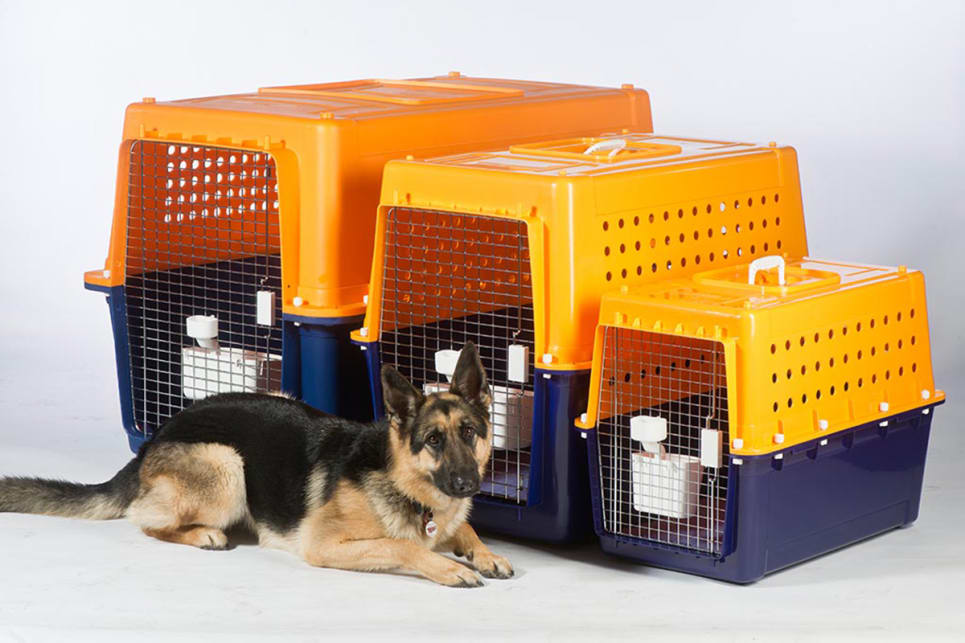
The ubiquitous photo of a dog travelling in a car, head out the window and tongue lolling in the breeze, is actually pretty far from reality. A dog, be it small or large, needs to be contained properly when travelling for its own safety and the safety of its humans – and not just while in the car.
One of the safest ways to transport your favourite pupper is with a dog crate. Let's take a bit of a look what's out there.
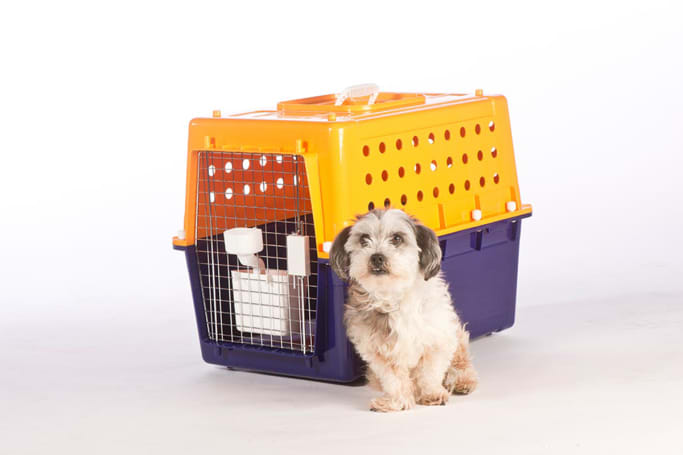
What is a dog crate?
A dog crate can take a few forms and can be known by a few names; pet crate, dog cage, dog pod, ute dog box or dog carrier can also refer to a dog crate.
Its most popular form is literally as it sounds; a rectangular crate, usually made of meshed material with a hinged door at one end.
They can be built from a variety of materials including plastic, aluminium and steel, and can be bought in stock sizes or made to order.
Why do I need a dog crate?
Whether you're simply going to the vet at the end of the street, or you're travelling half way around the world, a dog crate is an invaluable aid for keeping your furry friend safe and happy.
Even a little pup can be a handful, and you don't want them running amok in a car while you're driving. And in case of a crash, you not only want to secure them, but also your passengers from being struck by a large, furry projectile.
Dog crates are used when transporting your pet by air, whether within Australia or around the world.
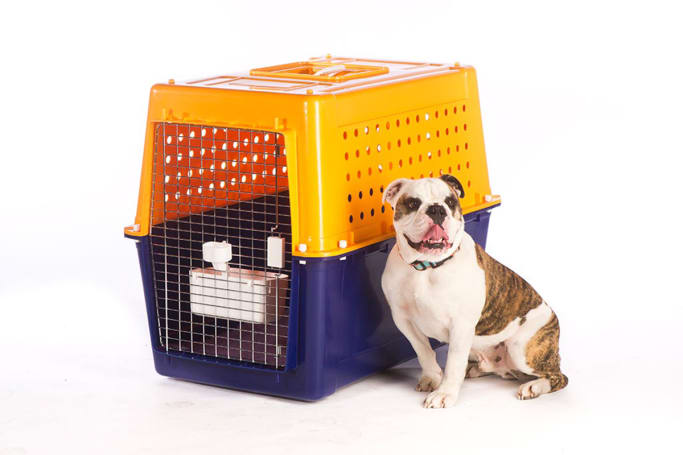
Are there rules around dog crates?
There are no specific rules around the construction of a dog travel crate, nor are there rules pertaining to crates being secured in a vehicle.
However, as a pet owner, there are laws that pertain to the welfare of your animal, and allowing a dog to be hurt because of poor carrying techniques or an inappropriate carrying container can net you a hefty fine at best, and a tragic end for your pet at worst.
Dog crates need to be well ventilated, have secure latchings and fittings, and – most importantly – be the correct size for your dog. While a small dog crate is a problem for a bigger dog, an extra large dog crate is equally as unsuitable for a pupper that needs a medium dog crate.
If you want to know what dog crate is the correct one, your vet is the best place to start.
What kind of dog crates are there?
The majority of dog crates are made of high-grade plastic, and are often moulded into a top and bottom half to allow for easy cleaning. The sides are ventilated to allow for the dog to see out of the crate, and the door is generally made of metal mesh.
For larger, stronger dogs, or escape artists disguised as dogs, a wire mesh crate may be more suitable, as your pup is less likely to be able to chew their way to freedom over a longer trip.
For the transport of specific types of breeds, like pig dog cages for example, a crate built from aluminium and designed to be bolted to the back of a ute can be used. These can even be made to carry more than one dog, or a dog and cargo, via partitions and dividers.
Again, there are no specific regulations around the crates themselves, but your custom-made cage needs to adhere to rules pertaining to use in a vehicle ie it has to be secured properly, not protrude excessively from the vehicle and not exceed payload limits.
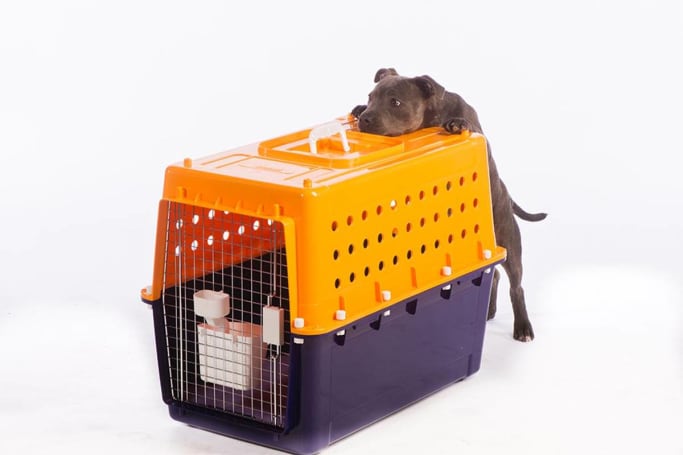
What is the best kind of crate for my dog?
There are more dog breeds out there than there are leaves on trees, so it's easiest to break down your dog crate needs by size.
When you buy a crate, a vet or a crate retailer can assist with measuring your dog. The key measurements are length (not including tail), standing height from front paws to top of head (or ears!) and shoulder width.
A small dog will generally be perfectly fine in a simple plastic crate of suitable size, as will a medium dog.
Large dogs may, depending on size and weight, need to be housed in a steel mesh crate, and the same for an extra large dog.
There are cheap fabric crates (sometimes known as soft dog crates) available online, but these are unsuitable for air travel, and do not provide a strong enough structure for your pupper to be comfortable. As well, they are often not sufficiently ventilated. If you need a crate that can be collapsed for storage, steel mesh crates can often be folded flat.
A custom-made crate may be required if you have a ridiculously big dog like a Great Dane, but most animal transport companies have experience in crating animals of all sizes and varieties around the world. You may find your big boy or girl needs a crate to suit a miniature pony, for example!
How can I get my dog ready for the crate?
Time is the biggest key to making sure your dog is happy travelling in a dog crate. Buy or hire the crate as soon as you possibly can after deciding on your travel plans; the more time your dog has to become familiar with it, the less stressed they are likely to be when the big day arrives.
There's nothing wrong with having the crate out in the yard or in the house for even a period of months prior to a big trip, or stored somewhere around the place if travelling is more frequent.
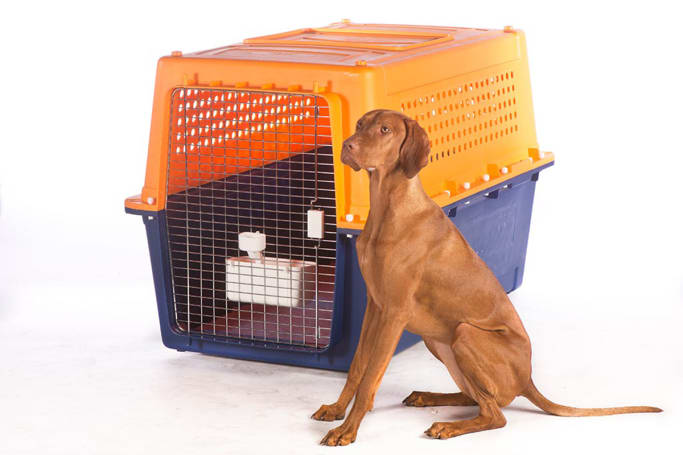
Dr Kate Gallus works for Jetpets, a company which specialises in transporting dogs in crates, and she says familiarisation is key to crate training a dog, or indeed crate training a puppy.
"Put their favourite bedding in the crate, feed them their meals and treats in the crate and leave the door open, so it starts to become a happy and positive environment for them," she says.
"Even for dogs that aren't that comfortable with the crate, getting them familiar with it will help them. When everything else is changing around them, it will remind them of home."









Comments